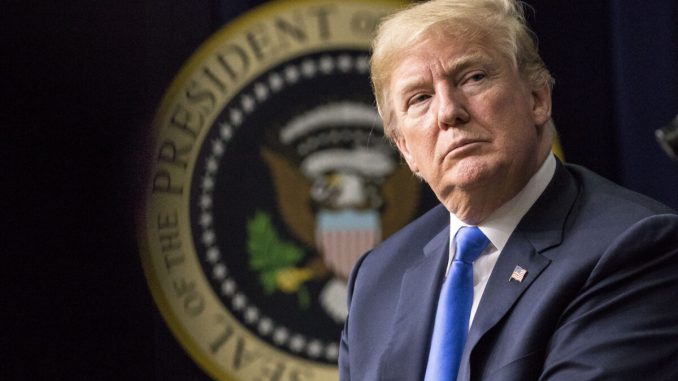
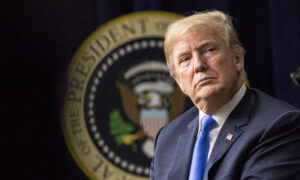
Commentary
The liberal media loudly proclaim that reports of 2020 presidential election irregularities are “lies.” But about one particular irregularity the media are mum.
Perhaps they’re silent because they know that this irregularity is undeniable and may, indeed, have flipped the election. It’s the elephant in the room they pretend not to see.
The “elephant” in this instance was the casting of mail-in ballots over a period of weeks—directly violating a federal statute specifically authorized by the Constitution. This changed the result in at least one swing state.
Here’s the background:
The Constitution (Article II, Section 1, Clause 2) assigns to the legislature of each state the task of deciding how the state “chooses” or “appoints” its presidential electors. (The Constitution uses both verbs.) Every state legislature has delegated the choice or appointment to the voters.
However, the Constitution also limits state legislative authority through its “Same Day Clause” or “Presidential Vote Clause” (Article II, Section 1, Clause 4). It provides as follows:
“The Congress may determine the Time of chusing [sic] the Electors, and the Day on which they shall give their Votes; which Day shall be the same throughout the United States.”
The Same Day Clause thereby grants Congress two powers over presidential elections:
(1) Congress may fix a single day on which all presidential electors in all states vote for president and vice president.
(2) Congress may set a “Time”—necessarily uniform—in which Electors are chosen. In other words, Congress may fix the day or days on which we go to the polls.
Congress has exercised both of these powers. The law prescribing when we go to the polls is U.S. Code, Title 3, Section 1. Here’s what it says:
“The electors of President and Vice President shall be appointed, in each State, on the Tuesday next after the first Monday in November, in every fourth year succeeding every election of a President and Vice President.”
In 2020, “the Tuesday next after the first Monday in November” was Nov. 3.
Congress has adopted only one exception to its single-day voting rule: If for some reason a state “has failed to make a choice” of presidential electors on Election Day, then the state’s legislature may decide the issue after Election Day. (U.S. Code, Title 3, Section 2.) But that is the only exception.
An old legal rule, commonly ascribed to the English jurist Francis Bacon, says that exceptions strengthen the general rule when applied to cases outside the exceptions. For example, if your spouse sends you to the grocery store to buy “any vegetables you want except carrots,” then (unless there is a family custom to the contrary) you can assume carrots are the only exception. You can buy any other vegetables you wish.
In other words, these federal statutes tell us, “There is one—and only one—exception to the rule that you must appoint presidential electors on Election Day. In narrow cases, you may choose them later. But you may never choose them earlier!”
In 2020, many states—often under pressure from Democratic Party activists and lawyers—violated federal law by allowing voters to cast ballots over periods spanning weeks. Moreover, those periods varied from state to state. True, the ballots generally were not counted nor results announced until on or after Election Day. But a state “chooses” or “appoints” presidential electors by balloting, not by counting or making announcements.
All this is pretty clear. In fact, it’s so clear that there haven’t been many court cases on the subject. The few violations of the same-day rule traditionally have been small: states have allowed absent armed service members and shut-ins to vote early by mail. No one wants to stop brave soldiers or disabled grandmothers from voting, so no one has sued to prevent it. If no one sues, there’s no case for the court to decide.
(Incidentally, there are ways of accommodating legitimate absentees without violating federal law.)
Probably the most important court decision on the subject is Maddox v. Board of State Canvassers. This case arose during World War II, when millions of Americans were abroad fighting the Axis Powers. The Montana legislature had passed a law allowing them to cast their ballots either before or after Election Day.
No one challenged the provision for early absentee ballots, but several people sued to block late voting.
The state supreme court unanimously voided the law and stopped late voting. The court relied on the Same Day Clause and the federal statute. The justices observed that extended voting could produce “fraud and uncertainty.” One justice stressed that he was “emphatically opposed to any recognition of the right to cast a ballot on any other day than the one fixed by statute.”
The Constitution’s framers would have agreed with this decision. They designed the presidential election system to forestall what Alexander Hamilton called “cabal, intrigue, and corruption.” They knew that stretching an election over a long period of time was an invitation to trouble. For example:
- Long voting periods heighten the risk that ballots cast at different times will be treated in different ways. This appears to have occurred in some states in 2020.
- Long voting periods make it easier for people to cast ballots in two or more places. This also happened in 2020.
- Long voting periods allow political operatives to use early results (now garnered by opinion polling) to stampede later voters. In 2020, some liberal media may have been guilty of this by emphasizing Biden’s lead among early mail-ins.
- Long voting periods virtually assure that people voting at different times will have different levels of knowledge. For example, information suggesting that Joe Biden knew of his son’s alleged misconduct emerged before some people had cast their ballots, but after others already had done so.
- Long voting periods give candidates and parties additional opportunities to confuse issues: They can target demographic groups that tend to vote early with one set of messages and then, after they have cast their ballots, woo later voters with inconsistent messages.
Did the widespread violation of federal law flip the election from Trump to Biden? We don’t know yet. But we can say with reasonable certainty that in one swing state, the answer is “yes.”
Joe Biden allegedly won Pennsylvania’s 20 electoral votes by a margin of only 80,555. But more than 2 million of Biden’s ballots came from mail-ins, among whom Biden outpolled Trump 3–1.
Now, assume that all those ballots were legitimate. If those who voted by mail had been required to go to the polls instead, experience shows that a significant number would not have bothered. Trump would have carried Pennsylvania—and perhaps other swing states as well.
Robert G. Natelson is a former constitutional law professor, a long-time political activist, a former gubernatorial candidate, and senior fellow in constitutional jurisprudence at the Independence Institute in Denver. He is the author of “The Original Constitution: What It Actually Said and Meant” (3rd ed, 2014).
Views expressed in this article are the opinions of the author and do not necessarily reflect the views of The Epoch Times.


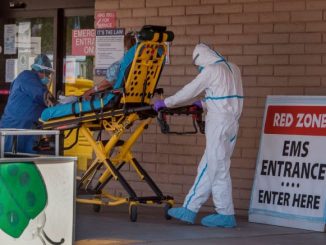
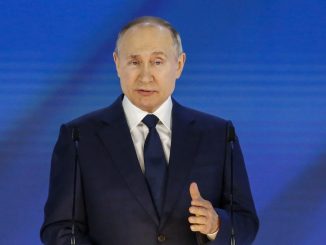
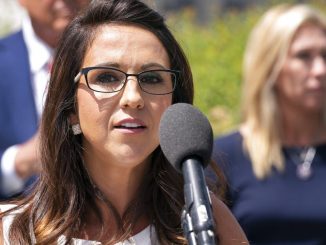
Be the first to comment